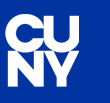
Publications and Research
Document Type
Book Chapter or Section
Publication Date
2019
Abstract
In this chapter, we consider the methods, goals, and practicalities of integrating digital labor into literary/historical pedagogy through a discussion of our work on the development and initial implementation of the augmented text platform, Reading Cities. As readers who are also digital humanities (DH) practitioners are no doubt aware, there are multiple forms of labor involved in a digital project blending tool development and research. Some of these forms of labor are readily apparent in the end product’s interface and content, but others would remain largely invisible if it were not for careful documentation of and critical reflection upon them. Perhaps not surprisingly, then, digital project labor has become an object of critical attention for teachers and scholars. As Rachel Sagner Buurma and Anna Tione Levine have reflected, “The slow, interpretive, and unglamorous aspects of DH work—data cleaning and corpus preparation and even metadata management—are increasingly acknowledged and even celebrated as valuable and central,” particularly as attention “coheres around the particularities and idiosyncratic features of the workflows of both personal and collective research.”ii Our own reflections grow out of such particularities and idiosyncrasies, and our aim in sharing them here is to highlight the embodied pedagogical, intellectual, and reproductiveiii labors that cohere around Reading Cities as a platform for textual augmentation. Throughout, we will describe the different types of faculty and student labor needed to implement a Reading Cities project within the humanities classroom. In the process, we also address the collaborative labor required to build the platform while serving as postdocs at different institutions. Close examination of the layers of labor required to bring this platform and its subsequent use cases into being refutes digital text as disembodiment conceptually as well as practically. The presence of digital texts, as well as the human infrastructure of labor around them, has the potential to bring new visibility and vibrancy to humanities scholarship as collaborative endeavor.


Comments
Originally published as a book chapter in Humans at Work in the Digital Age, Edited by Shawna Ross and Andrew Pilsch. 2019, pages 187-204. @ Routledge.